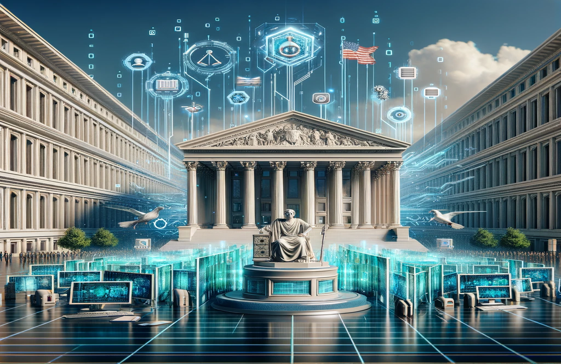
At the end of October, President Biden issued a comprehensive executive order that outlined the government's approach to the development and use of artificial intelligence (“AI”)[1]. Recognizing the dual nature of AI's potential — both promising and perilous — the order set forth guiding principles and priorities to steer the responsible growth of the transformative technology.
The executive order places paramount importance on ensuring the safety and security of AI systems. It emphasizes the need for robust, reliable, and standardized evaluations of AI, covering aspects from development to post-deployment monitoring. The order addresses pressing security risks, including those associated with biotechnology, cybersecurity, critical infrastructure, and national security concerns. Notably, it calls for the development of effective labeling and content provenance mechanisms, enabling users to discern when AI is in use. By laying this foundation, the government aims to harness the benefits of AI without compromising on safety.
Additionally, the directive underscores the significance of responsible innovation, competition, and collaboration to position the United States as a global leader in AI. This involves substantial investments in AI-related education, training, research, and development, while keeping in mind the need to protect the intellectual property of inventors and creators. The order highlighted a commitment to a fair, open, and competitive ecosystem, with a focus on preventing unlawful collusion and addressing risks from dominant firms. By fostering innovation and competition, the government aims to unlock AI's potential in addressing society's most complex challenges.
The executive order reinforces the administration's dedication to advancing equity and civil rights in the realm of AI. It expressly condemns any use of AI that perpetuates discrimination or bias, particularly in areas such as hiring, housing, and healthcare. Building on previous initiatives like the AI Bill of Rights[2] and the AI Risk Management Framework[3], the order commits to holding developers accountable for standards that protect against unlawful discrimination. Additionally, it emphasizes the protection of consumer interests, enforcing existing laws to safeguard against fraud, unintended bias, discrimination, and privacy infringements. In critical sectors like healthcare, financial services, education, and transportation, the order calls for heightened vigilance to prevent AI-related harms.
Ultimately, the executive order on AI sets a robust foundation for navigating the complexities of this transformative technology. By prioritizing safety, responsible innovation, and equity, the government aims to strike a delicate balance between harnessing the benefits of AI and mitigating potential risks. As AI continues to reshape industries and societies, this directive aims to position the United States at the forefront of global efforts to ensure the responsible development and use of artificial intelligence for the benefit of all.
[1] Executive Order on the Safe, Secure, and Trustworthy Development and Use of Artificial Intelligence | The White House
[2] Blueprint for an AI Bill of Rights: A Vision for Protecting Our Civil Rights in the Algorithmic Age | OSTP | The White House
